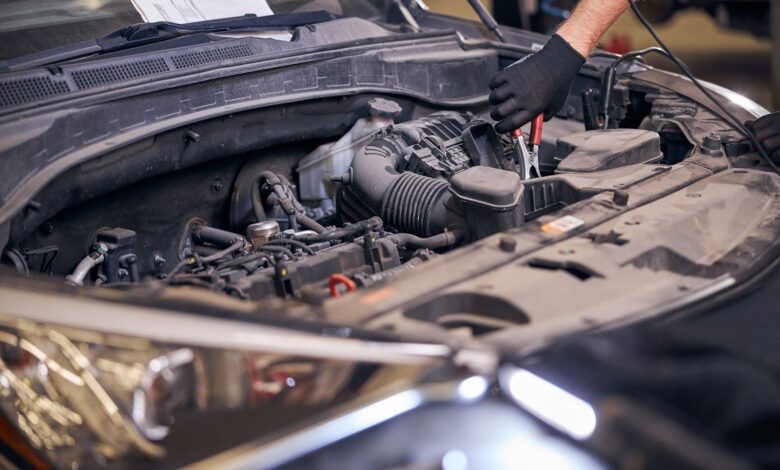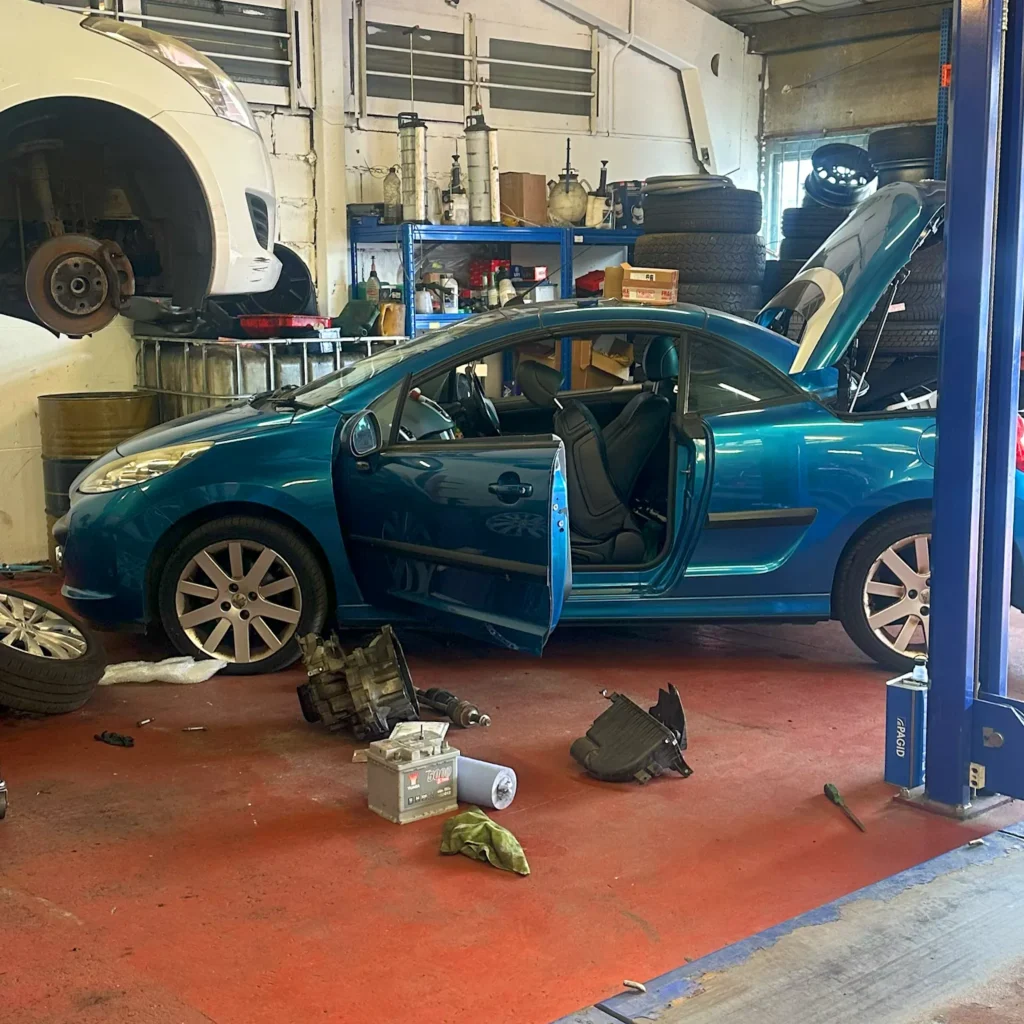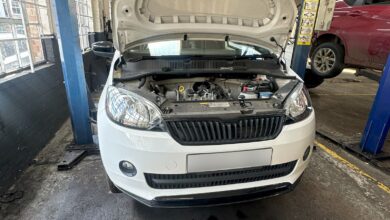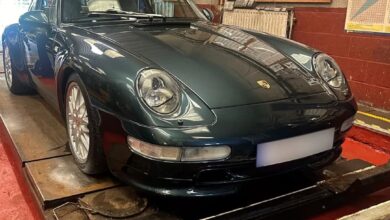MOT Failures Explained Top 10 Reasons Cars Fail Their MOT

Ensuring your vehicle passes its MOT is essential, not just for legal compliance, but for safety, performance, and peace of mind. Yet, every year, thousands of cars fail their MOTs due to issues that could have been prevented with timely checks and servicing. Understanding why vehicles fail and how to avoid common pitfalls can save you money, stress, and unnecessary downtime.
In this guide, we explore the top 10 reasons cars fail their MOT and how proactive servicing can help. For drivers in Fleet, Hampshire, TJ Services Fleet provides professional MOT preparation and servicing to ensure your vehicle is safe, roadworthy, and ready for inspection.
1. Faulty or Worn Brakes
Brakes are arguably the most critical safety component of any vehicle. Failing brakes can have serious consequences, which is why they are a leading cause of MOT failures.
Common brake issues include:
- Worn brake pads or discs.
- Low brake fluid levels.
- Leaking brake lines.
Signs your brakes may be failing include squealing, grinding noises, or a spongy brake pedal. Ignoring these warning signs not only puts your safety at risk but can also lead to MOT failure.
Tip: Regular brake inspections and servicing are essential. Ensuring that brake pads, discs, and fluid levels are in top condition can prevent failures and costly repairs later.
2. Tyre Problems
Tyres are your vehicle’s only point of contact with the road, so it’s no surprise that they are a major cause of MOT failures.
Common tyre issues include:
- Bald tyres or tread depth below the legal minimum of 1.6mm.
- Uneven tyre wear.
- Cuts, cracks, or bulges in the tyre.
Driving with worn or damaged tyres is dangerous. It increases stopping distances, reduces grip, and raises the risk of punctures or blowouts. Regular tyre checks, rotation, and replacements are key to passing your MOT and staying safe on the road.
3. Lights Not Working Properly
Vehicle lighting plays a vital role in road safety and legal compliance. MOT tests strictly check that all lights are functioning correctly.
Common lighting issues include:
- Headlights that are dim, broken, or misaligned.
- Indicators or brake lights that fail intermittently.
- Number plate lights not working.
Even a single non-functioning light can cause an MOT failure. Regularly inspecting your lights, replacing bulbs when necessary, and ensuring alignment is correct can save you a failed test and help avoid accidents.
4. Steering and Suspension Issues
The steering and suspension systems are essential for handling, comfort, and safety. MOT inspectors check that these components are functioning properly.
Warning signs include:
- Vehicle pulling to one side.
- Vibrations or wobbling while driving.
- Rough or bumpy ride.
Problems in the suspension or steering can stem from worn shock absorbers, misaligned wheels, or damaged steering components. Not only do they affect comfort, but they also increase tyre wear and can compromise braking effectiveness. Regular servicing ensures your vehicle handles correctly and passes inspection.
5. Windscreen Damage
A damaged windscreen can obstruct your view and compromise driver safety. MOT regulations are strict about chips or cracks in critical viewing areas.
Key points:
- Chips or cracks directly in the driver’s line of sight can result in automatic failure.
- Larger cracks on other parts of the windscreen may also fail an MOT if they compromise safety.
Quick repairs, like resin filling for minor chips, or windscreen replacement for severe damage, can prevent MOT failure and maintain clear visibility.
6. Exhaust and Emissions Problems
Exhaust and emissions checks are a standard part of the MOT test. Faulty exhaust systems or excessive emissions can result in failure.
Common issues include:
- Leaks in the exhaust system.
- Excessive smoke (black, blue, or white).
- Failed emissions tests due to engine or fuel system problems.
Not only do these problems affect your MOT, but they also contribute to environmental pollution. Regular servicing and emission checks help maintain compliance and engine efficiency.
7. Seatbelts and Safety Equipment
Seatbelts and other safety equipment are inspected rigorously during MOTs. Any faults can lead to immediate failure.
Potential issues include:
- Frayed or worn seatbelts.
- Seatbelt retractors not functioning.
- Missing or broken safety components.
Ensuring that all seatbelts and safety devices work properly protects occupants and avoids MOT failure. Regular checks and repairs are essential, especially in vehicles used frequently or by multiple drivers.
8. Mirrors and Visibility Issues
Proper visibility is crucial for safe driving, and MOT inspectors check mirrors, wipers, and washers.
Common failures include:
- Missing or broken mirrors.
- Wipers that don’t clear the windscreen effectively.
- Washer jets blocked or leaking.
Maintaining mirrors, windscreen wipers, and washer systems not only helps you pass your MOT but also keeps your driving safe in all weather conditions.
9. Horn and Warning Devices
The horn is a simple yet essential safety feature. A non-functioning horn or other warning devices can lead to MOT failure.
Issues to watch for:
- Horn doesn’t sound or is intermittent.
- Warning devices like ABS or airbag indicators malfunction.
Regular servicing ensures all warning and alert systems function properly, maintaining safety and avoiding test failure.
10. Vehicle Structure and Corrosion
Structural issues and rust can compromise the safety of your vehicle. MOT inspectors check for corrosion that affects the body, chassis, or critical components.
Common problems:
- Rust around suspension mounting points.
- Corroded chassis or frame damage.
- Any structural compromise affecting vehicle safety.
Early detection and repair of rust or structural damage not only ensures MOT compliance but also extends your vehicle’s lifespan.
How TJ Services Fleet Can Help
For drivers in Fleet, Hampshire, TJ Services Fleet is your trusted partner for MOT preparation, inspections, and full servicing. Their skilled technicians can identify and resolve common failure points before your MOT test, giving you confidence that your vehicle will pass the first time.

Services include:
- Full and interim servicing to maintain all critical systems.
- Brake and suspension checks and repairs.
- Tyre inspections and replacements.
- Engine diagnostics and exhaust inspections.
By using TJ Services Fleet, you can avoid costly MOT failures, reduce repair expenses, and ensure your vehicle remains safe and reliable.
Location: 31 Sandy Lane, Church Crookham, Fleet, Hampshire GU52 8BX. Get directions to TJ Services Fleet on Google Maps
Phone: 01252 622200
Benefits of Addressing MOT Failures Early
Proactively servicing your vehicle before the MOT offers several advantages:
- Avoid MOT Failures: Fixing issues early increases the chance of passing first time.
- Save Money: Minor repairs are cheaper than fixing major faults after failure.
- Ensure Safety: Maintains brakes, tyres, steering, and other critical systems.
- Improve Vehicle Performance: Optimizes fuel efficiency, handling, and reliability.
Conclusion
MOT failures are often preventable if you know what to look for and take action early. By understanding the top 10 reasons cars fail their MOT, you can address problems before they become major issues.
For drivers in Fleet and surrounding areas, TJ Services Fleet provides professional MOT preparation and vehicle servicing to keep your car safe, roadworthy, and compliant. Ready to book your next MOT in Fleet Hampshire? Don’t risk failing your MOT. Schedule your service today and drive with confidence.



